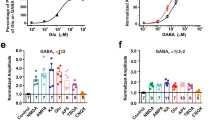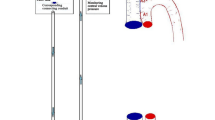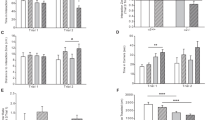Abstract
NUMEROUS investigations have shown that certain amino-acids, including several which are present in the mammalian central nervous system, strongly influence the behaviour of neurones when applied extracellularly1–4. These amino-acids fall into two groups; neutral amino-acids related to γ-amino-n-butyric acid (GABA), which depress the activity of neurones, and acidic amino-acids related to glutamic acid, which excite neurones3. An analysis of the effects of these substances on mammalian spinal neurones indicates that whereas the mechanism of action of GABA differs from that of mammalian inhibitory transmitters5, the action of L-glutamie acid has certain features in common with that of excitatory transmitter substances3,6. Recently, several substances were found to have a much greater potency than GABA and glutamic acid as depressants and excitants respectively of neurones within the isolated and sagitally hemisected spinal cord of the toad7. In particular, N-methylaspartic acid and homocysteic acid were found to be potent excitants, and 3-amino-1-propanesulphonic acid was a powerful depressant. The potencies of these and related amino-acids on mammalian spinal and cortical neurones have now been determined.
This is a preview of subscription content, access via your institution
Access options
Subscribe to this journal
Receive 51 print issues and online access
$199.00 per year
only $3.90 per issue
Buy this article
- Purchase on SpringerLink
- Instant access to full article PDF
Prices may be subject to local taxes which are calculated during checkout
Similar content being viewed by others
References
Purpura, D. P., Girado, M., Smith, T. G., Callan, D. A., and Grundfest, H., J. Neurochem., 3, 238 (1959).
Van Harreveld, A., J. Neurochem., 3, 300 (1959).
Curtis, D. R., and Watkins, J. C., J. Neurochem., 6, 117 (1960).
Honour, A. J., and McLennan, H., J. Physiol., 150, 306 (1960).
Curtis, D. R., Phillis, J. W., and Watkins, J. C., J. Physiol., 146, 185 (1959).
Curtis, D. R., Phillis, J. W., and Watkins, J. C., J. Physiol., 150, 656 (1960).
Curtis, D. R., Phillis, J. W., and Watkins, J. C., Brit. J. Pharm., 16, 262 (1961).
Curtis, D. R., Perrin, D. D., and Watkins, J. C., J. Neurochem., 6, 1 (1958).
Purpura, D. P., Girado, M., and Grundfest, H., Electroenceph. clin. Neurophysiol., 12, 95 (1960).
Marshall, W. H., Physiol. Rev., 39, 239 (1959).
Author information
Authors and Affiliations
Rights and permissions
About this article
Cite this article
CURTIS, D., WATKINS, J. Analogues of Glutamic and γ-Amino-n-butyric acids having Potent Actions on Mammalian Neurones. Nature 191, 1010–1011 (1961). https://doi.org/10.1038/1911010a0
Issue date:
DOI: https://doi.org/10.1038/1911010a0
This article is cited by
-
Questioning Glutamate Excitotoxicity in Acute Brain Damage: The Importance of Spreading Depolarization
Neurocritical Care (2022)
-
The 1980s: d-AP5, LTP and a Decade of NMDA Receptor Discoveries
Neurochemical Research (2019)
-
Effect of Bradykinin Postconditioning on Ischemic and Toxic Brain Damage
Neurochemical Research (2015)
-
Review of Pharmacological Treatment in Mood Disorders and Future Directions for Drug Development
Neuropsychopharmacology (2012)
-
Serum and hair zinc levels in epileptic children taking valproic acid
Biological Trace Element Research (1997)



